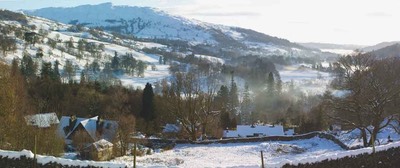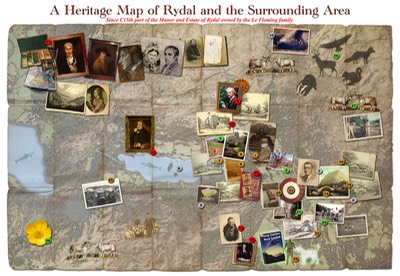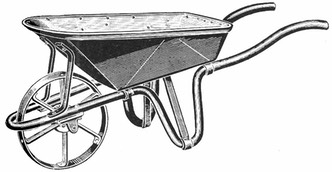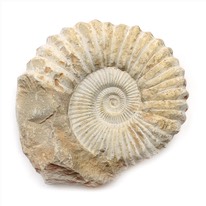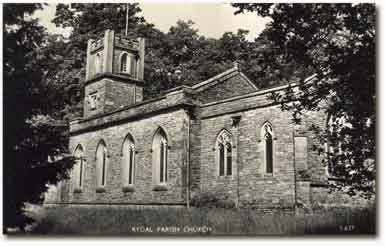
The Chapel of St. Mary, Rydal, was built by Lady le Fleming of Rydal Hall, at a cost of £1,500. She herself laid the foundation stone in July, 1823. The Chapel was opened for public worship on Christmas Day, 1824, and consecrated by Dr. Blomfield, Bishop of Chester, on August 26th 1825.
William Wordsworth, who was then living at Rydal Mount, helped to choose the site, which was originally an orchard, and he composed two poems, one ‘to the Lady Fleming on seeing the Foundation preparing for the erection of Rydal Chapel, Westmorland’, and another, ‘On the same occasion’. The first poem is prefaced by the following note:
‘After thanking Lady Fleming in prose for the service she had done to her neighbourhood by erecting the chapel, I have nothing to say beyond the expression of regret that the architect did not furnish an elevation better suited to the site in a narrow mountain-pass, and what is of more consequence, better constructed in the interior for the purpose of worship. It has no chancel; the altar is unbecomingly confined; the pews are so narrow as to preclude the possibility of kneeling in comfort; there is no vestry; and what ought to have been mentioned, the font, instead of standing in its proper place at the entrance, is thrust into the farther end of a pew. When these defects shall be pointed out to the munificent patroness, they will it is hoped be corrected’.
These ‘defects’ remained until 1884.
When Rydal Chapel became a Parish Church with its own Vicar, the new foundation took a large slice out of the old parish (Grasmere), though customary dues and tithes continued to be paid to the Rector of Grasmere until 1870. Rydal continued with its own Vicar until 1943 when the benefice was combined with Ambleside. The separate benefice of Rydal was re-established in 1963 when Rydal Hall became the Carlisle Diocesan Conference and Retreat House with the new Priest-in-Charge of Rydal Church being also Warden of Rydal Hall. The arrangement continued until 2003 when the Diocese appointed a general manager at Rydal Hall. A Vicar was again appointed for Rydal Church, who also serves as Chaplain of Rydal Hall and Rector of Grasmere.
THE WORDSWORTH AND ARNOLD PEWS
The Wordsworth pew is the one in front of the pulpit, and was used by the Wordsworth family for a quarter of a century. Wordsworth himself, who had been Chapelwarden in 1833, attended service for the last time on Sunday, 10 March 1850. Two days later he was taken ill, and died on April 23rd.
Dr. Arnold, Headmaster of Rugby School (1828-1842), who built Fox How, Loughrigg, as a holiday residence, was an intimate friend of the Wordsworths, and the Arnold family pew is the one in front of the lectern.
THE ORGAN
Built by an Edinburgh firm in 1807, it was rebuilt and enlarged in 1870. It bears a tablet recording its transfer to Rydal Church:
‘To the glory of God and in memory of George Godfrey Cunningham of Elleray Bank, Windermere, who died 6th February, 1904, and in fulfilment of whose wishes this organ was presented to Rydal Church’.
The organ was renovated and restored almost to its original state in 1980. It is reputed to be the finest baroque organ in the diocese.
CHALICE
An early 17th century chalice, with a baluster-stem and a quartered Fleming coat-of-arms on the bowl, was used in the church and is now in the Cathedral Treasury at Carlisle.
GALLERY
The gallery was at one time kept for the private use of the le Fleming family, of Rydal Hall, but is now in general use. In 1995, it was fitted with glass screens so that it can be used for the Sunday School and other meetings.
MEMORIAL WINDOWS
The East Window is to the memory of George Cumberland Hughes le Fleming, Major-General in Her Majesty’s late Indian Army. Born at Widcombe Terrace, Bath, 21st July 1807. Died at Rydal, 7th June 1877.
On the South side are three windows; the first one, near the lectern, is to the memory of Dr. Thomas Arnold, Headmaster of Rugby, who died at Rugby, June 12th 1842, and Mary, his wife, who died at Fox How, September 30th 1873.
The middle window, erected in 1891, and designed by Henry Holiday, is in memory of Jemima Katherine and Rotha Quillinan, daughters of Edward Quillinan and step-daughters Dora Wordsworth, who was William Wordsworth’s daughter. The drawings for this window were exhibited at the Royal Academy in advance.
The thirds window is in memory of Wilson Fox, M.D., F.R.S., of Field Foot, Rydal, Physician-in-Ordinary to Queen Victoria, who died May 3rd 1887.
MEMORIAL TABLETS
Under the Arnold window is a tablet commemorating the ten children (including Matthew) of Dr. Arnold and his wife. Five of these, together with Mrs Arnold, are buried in Ambleside Churchyard. Dr. Arnold is buried in Rugby School Chapel.
On the wall, under the Hymn board, is a tablet in memory of Frances, Dr. Arnold’s youngest daughter, born October 10th 1833, died September 9th 1923, who lived for 75 years in the neighbourhood.
On the North wall, beneath the pulpit and near his own pew is a memorial tablet to William Wordsworth, erected in 1996 with funds made available by the Armitt Trust.
A second tablet commemorates George Alexander Hughes, 2nd son, and Elizabeth Constance Forward, 3rd daughter, of Major-General Hughes le Fleming, who died on April 13th and June 5th, respectively, 1933.
On the same wall on oak tablet bears the name of Ronald Bell, of Rydal, 4th Border Regiment, who fell in action at Incheville, June 9th 1940.
On November 24 1957, Rydal Church was closed for major repairs. Dry rot and woodworm had attacked the roof and windows to such an extent that it was in immediate danger of collapsing. An appeal was launched for £2,500, the amount estimated as needed for restoration. When operations began it was apparent that at least another £500 would be necessary. Contributions came in from far and wide and so rapid was the progress in the work that the church was re-opened for services again on Easter Day, April 6th 1958. More recently, £40,000 was raised between February 1992 and December 1993 for further renovations and improvements.
A WALK AROUND THE CHURCH
In addition to special features of Rydal Church described here, several are common to many churches.
The Altar or Holy Table stands in the centre at the far end. Here the priest presides at the Eucharist (Holy Communion), when bread and wine are blessed and shared as the Memorial of Jesus. At Rydal, we receive Holy Communion standing around the altar as a sign of unity and readiness to serve; so there are no Communion rails here as in most churches.
Except on Good Friday, the altar is covered with a cloth, the colour of which shows the Church’s seasons; white for Christmas and Easter, red for Pentecost (Whitsunday) and some Saints’ Days, violet for Advent and Lent and green for ordinary Sundays.
The area around the altar is the Chancel. The nearer end of the church, with the Pews (bench seats), is called the Nave; no one really knows the reason for this name, though it may come from the Latin for a ship, an early symbol of the church.
At the end of the nave to right and left are the Lectern, from which the Bible is read, and Pulpit, from which sermons are preached. In some churches, the lectern is shaped like an eagle, symbolizing the Word of God flying across the world.
Above the pulpit is a Crucifix (a cross with the figure of Jesus), a reminder that (as S. Paul wrote) ‘we preach Christ crucified’, while the Empty cross behind the altar is a sign of the resurrection: Christ no longer dead, but alive.
At the near end of the nave, just inside the door, is the Font, into which water is poured for Baptism (Christening). In the centre of the font cover is a Mitre, the headdress of a bishop, because the seal is set on Baptism when a person goes to the Bishop for Confirmation.
The two long Wands in pews near the door belong to the Churchwardens, the chief representatives of the people of the parish, responsible to the Bishop. The wands bear stylised Lilies, a symbol of S. Mary, the Patron Saint of Rydal Church.
MILLENNIUM GARDEN
A garden was created to mark the Millennium; this was a partnership between parish and village. An appeal was launched and after two year’s hard work, the garden was officially opened on Easter Day 2000 by the Bishop of Carlisle, the Right Revd. Ian Harland. Around the site there are flower and shrub beds, seats, a picnic table and a tree seat, all of which have been given in memory of loved ones. Two beds at the top of the garden have recently been created and to date, these are not named.
Rydal is the smallest parish in the diocese of Carlisle and is a member of Churches Together in Ambleside and District. The church is open daily. Do call in the church and garden when you are visiting Rydal.
Thank you for reading this. Please remember the people of Rydal and our other visitors in your prayers and thoughts.
Worship & Prayer
Every Sunday there is a Eucharist at 9.30 am. with a Sunday School and refreshments after the service
Every Tuesday evening at 7.30pm there is a Christian Meditation Meeting in the Church Gallery
On the first Sunday of each month at 7pm there is a Taizé-style prayer with music and silence.
